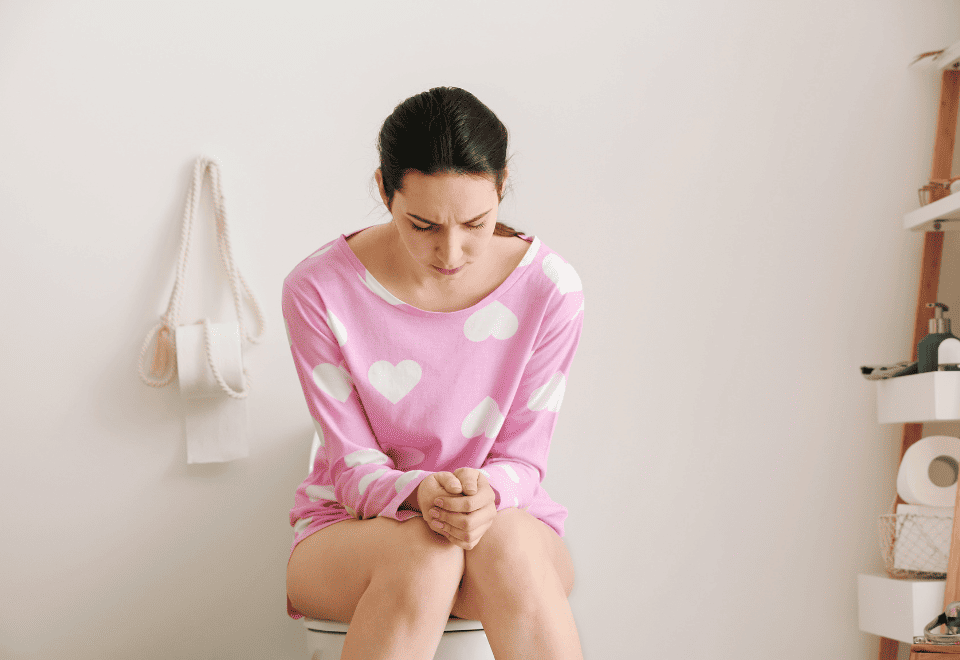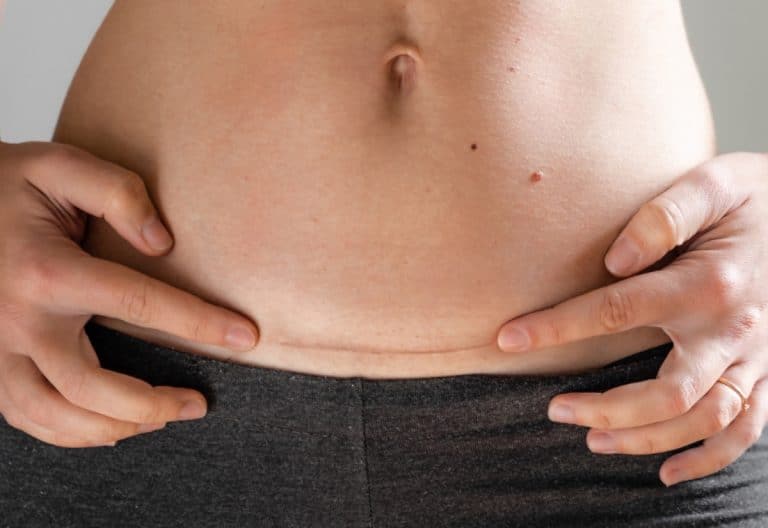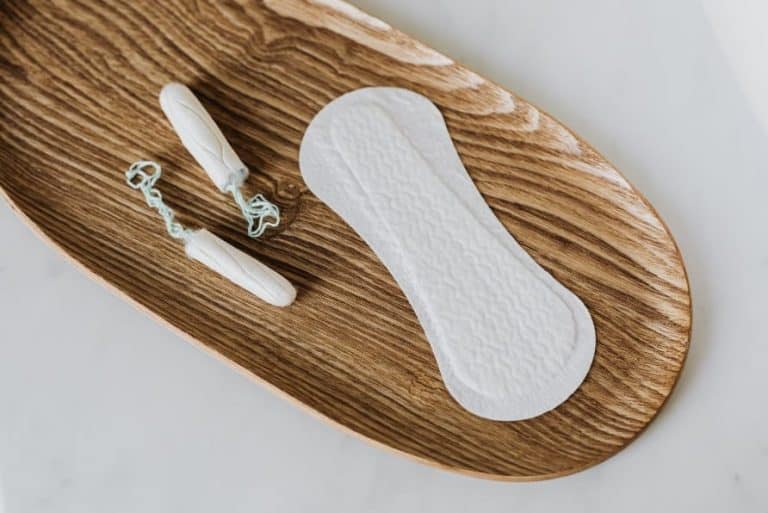5 Necessities For Your After C-Section Poop
This post may contain affiliate links, which means I’ll receive a commission if you purchase through my links, at no extra cost to you. Please read full disclosure for more information.
I had the hardest time finding any information about what my after c-section poop was going to be like. Talking about bowel movements or poop might not be many people’s favorite topic for discussion.
Nevertheless, it’s a natural part of human life and something that women who just gave birth tend to worry about including c-section moms.
I personally thought I was in the clear to resume my normal poop routine after my c-section but I was way wrong.
That’s why I needed to share 5 necessities to prepare you for your first after c-section poop. Or better yet, the first few months of poops until your body is fully regulated and you’ve completely weaned off your pain medication that’s causing constipation.
5 Necessities For Your First Poop After C-Section

As c-section moms (planned or unexpected), we try to find the positives in our situation. And we often assume just because we didn’t birth our babies through our vagina, that we don’t have to worry about the pain associated “down there”. But that’s totally not true and you can still easily get hemorrhoids if you don’t prepare yourself for your first poops after your c-section.
In this blog post, I’m going to go over a few things that helped me stay on top of my poop routine, regulate my system, and help me get back to my usual, painless pooping self.
1. Stool Softener
MiraLax was my best friend along with the laxative I took throughout my postpartum phase. After having a few hemorrhoid flare-ups (which I have never experienced until after my c-section) and sitting on the toilet praying a drop of poop would just come out of me, I came to my wit’s end.
I would have never expected my first bowel movement(s) after my c-section would be this horrendous of an experience. And that’s because first poops after birth aren’t something people like to run around talking about.
Fortunately, stool softeners help relieve your constipation by making your poops softer for them to easily pass without you having to strain (ultimately leading to hemorrhoids).
2. Laxative
If you didn’t already know (hopefully you’re doctor or nurse went over your medication side effects with you), the pain relievers you’re given after your c-section are notorious for backing you up for days and weeks.
And that’s why there’s another group of medications called laxatives. Laxatives also help with constipation by emptying your bowels. It stimulates bowel movement and loosens up your poop for it to easily pass.
I honestly don’t know what I would’ve done without my bottles of Phillips’ Milk of Magnesia. After desperately searching for constipation relief that actually worked and that was going to stimulate all of the backed-up poop to come out of me, this did the trick.
Don’t wait a month after you’ve already been suffering from constipation (like I did) to get you a bottle of Phillips’ Milk of Magnesia.
Related Posts
Everything About Your First Periods After Birth – C-Section Birth
Get Rid Of Your C Section Shelf With 10 Steps
The Only C Section Scar And Recovery Postpartum Guide You Need
3. Tons of Water

Drink plenty of water. And I’m not saying drink water when you’re thirsty. Drink water even when you don’t feel like drinking water because it’s going to help with the consistency of your poop. What I mean by this is that the more hydrated you are, the easier your poop will be to pass instead of having to strain.
Water is also going to help you get regulated while you’re constantly being hydrated which will also alleviate constipation.
You might have seen my other posts where I rave about this water bottle. And that’s because I have one and even got my husband one. We use it every single day and helps us stay on track with our water intake because it holds up to 50oz.
Check out 15 Easy Ways To Drink More Water
4. Fibrous Foods
Some examples of fibrous foods that might be a common food item in your diet already are beans, popcorn, broccoli, apples, avocados, nuts, potatoes, and berries. Read other high-fiber foods here.
Another supplement I used along with MiraLax and Phillips’ Milk of Magnesia, is Metamucil Fiber Powder. If you don’t want to worry about eating fibrous foods every day, then this powder will be your go-to supplement and will also help clean your system out.
5. Less Pain Meds
If you can manage your pain without the narcotics (stronger pain medication), then definitely stop taking them. Those are the medications that will continue causing constipation and ruthless first poop after the c-section experience.
After about the second week, I was able to completely stop taking my narcotics and manage my pain with the interchanging of Tylenol and Motrin. And once I did that was when I was able to poop more regularly.
Final Thoughts
Like I said earlier, nobody likes talking about their bowel movement or their first poop after c-section. But it’s a topic that needs to be covered in order to help you get through the first few bowel movements after a c-section without numerous hemorrhoids.
You will seriously have a smooth transition back to your normal poop routine by taking MiraLax, Phillips’ Milk of Magnesia, Metamucil Fiber Powder, staying hydrated at all times, and weaning off narcotics as soon as you can. Thanks for reading!






